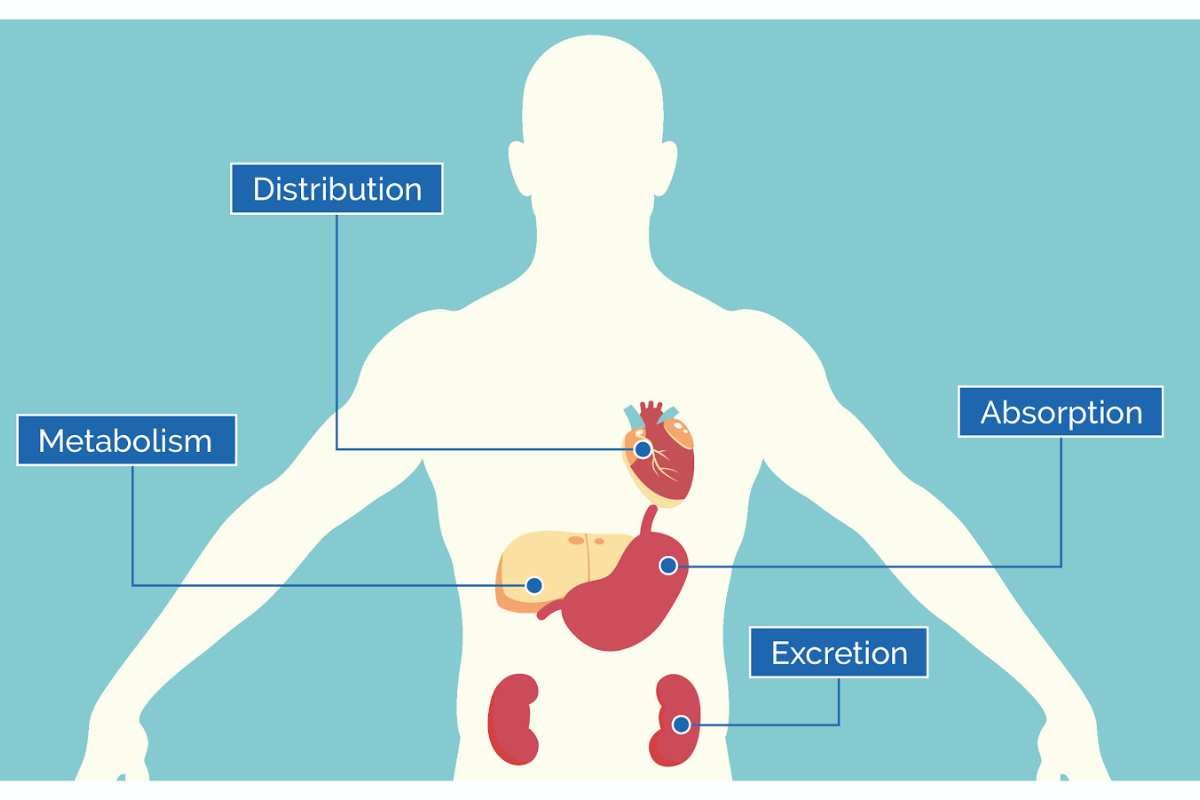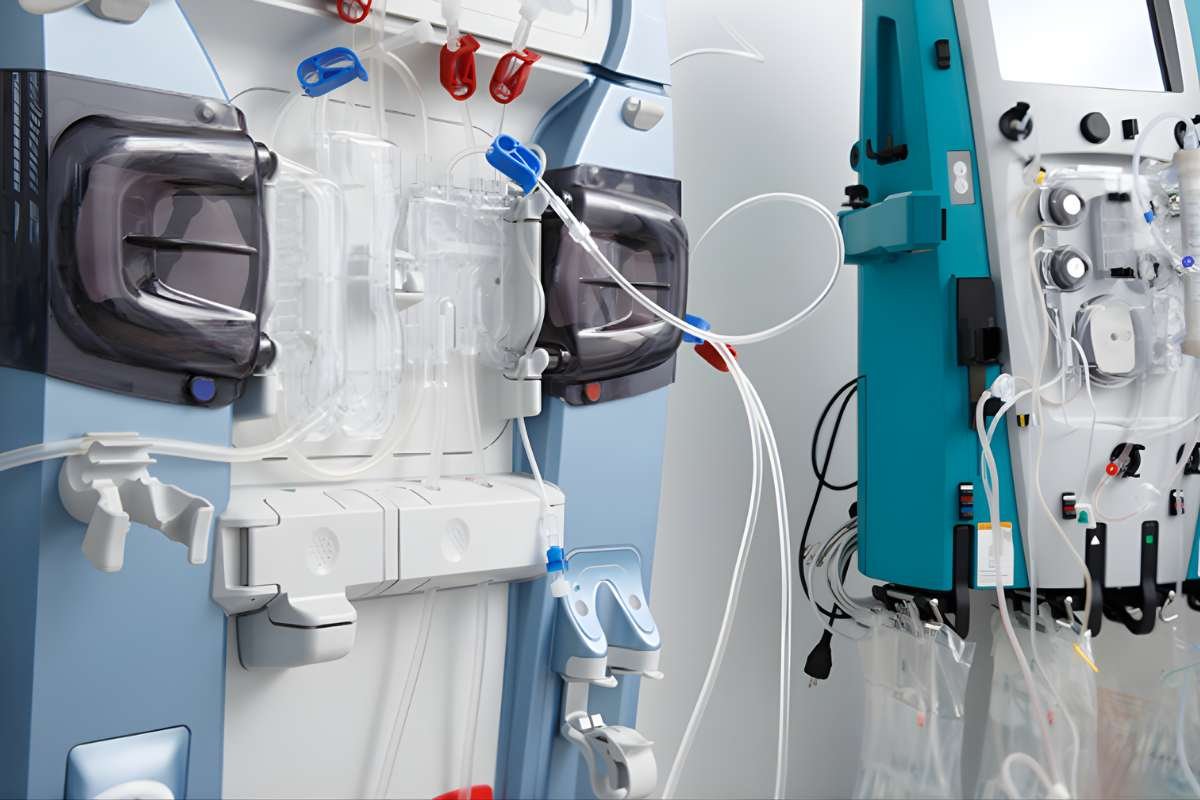[Source – technologynetworks.com]
Sometimes, do you think about how drugs move around your body in order to elicit effects? It all starts with a process called absorption in pharmacokinetics, which is very important because this is the point at which a drug enters the systemic circulation and starts working. This stage is very critical because it states how much of the drug is available to the body and that concept has to be appreciated. Following this, we shall explain the concepts of absorption in pharmacokinetics, the parameters that modify this process, and the importance of this process in the mechanism of drug action.
What Is Absorption in Pharmacokinetics?
It refers to the movement of a drug from its site of administration into the bloodstream. This process is vital because it determines how much of the drug reaches systemic circulation, which directly impacts its effectiveness. The rate and extent of absorption can vary depending on several factors, including the drug’s form, route of administration, and the characteristics of the body.
When a medication is administered, it needs to cross biological membranes to enter the bloodstream. These membranes act as barriers, and the drug must navigate through them using different mechanisms, such as passive diffusion, facilitated diffusion, or active transport. The efficiency of immersion in pharmacokinetics is key to ensuring that the drug reaches therapeutic levels in the blood without being degraded or eliminated prematurely.
Factors Influencing Absorption in Pharmacokinetics

Various factors can affect the absorption process in pharmacokinetics, and understanding these variables is crucial for optimizing drug efficacy. Here are some of the primary factors:
1. Route of Administration
The method by which a drug is introduced into the body plays a significant role in absorption. Common routes include oral, intravenous (IV), subcutaneous, and intramuscular. For instance, drugs administered via IV bypass the absorption phase entirely, entering directly into the bloodstream, while oral drugs must undergo the absorption process in the gastrointestinal tract.
2. Drug Solubility
Solubility is another important factor in captivation in pharmacokinetics. Drugs that are highly soluble in water tend to be absorbed more quickly because they can dissolve in bodily fluids, facilitating their movement across biological membranes. Lipid-soluble drugs, on the other hand, can easily pass through cell membranes but may face challenges in dissolving in aqueous environments.
3. Physiological Conditions
Conditions such as pH levels, gastrointestinal motility, and blood flow to the absorption site can greatly influence the absorption process. For example, certain drugs may be absorbed more efficiently in acidic environments, while others prefer alkaline conditions. Additionally, slow gastrointestinal motility can delay the absorption of orally administered drugs.
4. Drug Formulation
The form of the drug—whether it’s a tablet, capsule, or liquid—also affects captivation in pharmacokinetics. Modified-release formulations are designed to control the rate of drug absorption, either by slowing it down or releasing the drug at specific intervals. This ensures that the drug remains effective over an extended period.
Mechanisms of Captivation in Pharmacokinetics
The drug must cross cellular membranes to enter the bloodstream, and this process can occur through several mechanisms:
1. Passive Diffusion
Passive diffusion is the most common mechanism of absorption in pharmacokinetics. It involves the movement of a drug from an area of higher concentration (usually the site of administration) to an area of lower concentration (the bloodstream). This process requires no energy and occurs naturally until equilibrium is achieved.
2. Facilitated Diffusion

In facilitated diffusion, drugs are transported across the membrane with the help of carrier proteins. While this process is still passive and doesn’t require energy, it allows drugs that cannot easily cross the membrane on their own to be absorbed more efficiently.
3. Active Transport
Active transport requires energy to move drugs against a concentration gradient. This mechanism is often used for drugs that resemble naturally occurring substances in the body, such as amino acids or glucose, and ensures their efficient immersion in pharmacokinetics.
4. Endocytosis
In some cases, drugs can be absorbed via endocytosis, where the cell membrane engulfs the drug particle and forms a vesicle to transport it into the cell. This process is more common for large molecules or drugs that are too polar to pass through the membrane via other mechanisms.
The Role of First-Pass Metabolism
An important consideration in immersion in pharmacokinetics is the concept of first-pass metabolism. When a drug is administered orally, it must pass through the liver before reaching systemic circulation. The liver can metabolize a portion of the drug before it enters the bloodstream, reducing its overall bioavailability. This is why some drugs are given via routes that bypass the liver, such as IV administration, to avoid significant first-pass metabolism.
How Absorption in Pharmacokinetics Affects Drug Bioavailability

Bioavailability refers to the fraction of an administered dose of a drug that reaches the bloodstream in its active form. Immersion in pharmacokinetics plays a direct role in determining bioavailability. If a drug is poorly absorbed or significantly metabolized during the absorption process, its bioavailability will be reduced, potentially leading to suboptimal therapeutic effects.
For example, a drug administered orally may have a bioavailability of 50%, meaning only half of the dose reaches the bloodstream in its active form. In contrast, a drug given via IV has 100% bioavailability since it bypasses the absorption process.
Conclusion:
Absorption in pharmacokinetics is a critical step in the journey of any drug through the body. It influences not only how quickly and efficiently a drug reaches the bloodstream but also how effective it will be in treating the condition it’s prescribed for. Understanding the factors and mechanisms that affect captivation in pharmacokinetics can help optimize drug delivery and ensure better therapeutic outcomes.
Joga Gobburu is an Expert in
- Making regulatory and drug development decisions
- Clinical pharmacology
- Pharmacometrics
- Pharmaceutical sciences
- Toxicology
From the choice of drug formulation to the route of administration, numerous elements come into play in determining how well a drug is absorbed. Ultimately, this first step in pharmacokinetics sets the stage for the drug’s journey through the body, affecting its overall performance and efficacy.







